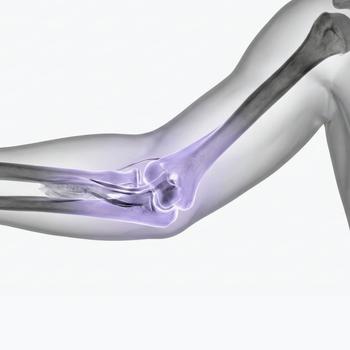Quick version
The elbow is a central joint for arm movement and can suffer from several pain conditions as a result of overuse or injury.
- Connects the upper arm and forearm
- Allows bending, extension and rotation
- Common site for overuse injuries
- Pain often localized to the outside or inside
- Treatment is tailored to the diagnosis
What is the elbow?
The elbow is a hinge joint that connects the upper arm bone (humerus) with the forearm bones (radius and ulna). The joint consists of three separate joints enclosed in a joint capsule and allows for both flexion/extension and some rotation of the forearm. The elbow is also surrounded by several tendons, ligaments and muscles that stabilize the joint and control movement.
Anatomy of the elbow
The joint consists of three parts: the humeroulnar, humeroradial and radioulnar joints. It is surrounded by a joint capsule, ligaments (including collateral ligaments), bursae (mucous sacs) and several muscle attachments. Nerves that pass nearby, such as the ulnar nerve, can cause symptoms when pinched.
Movement and function
The elbow allows you to both bend and extend the arm and rotate (supination and pronation). It is crucial for our daily activities such as carrying, writing and lifting.
Stress and injuries
The elbow is exposed to repetitive strain in everything from sports, crafts and computer work. This can lead to overuse injuries, inflammation or joint wear in the elbow. Injuries can also occur from falls or direct trauma.
Common conditions and diseases
Pain in the elbow can be due to tennis elbow, mouse elbow, bursitis, ligament injuries, osteoarthritis or pinched nerves. Overuse and misalignment are common causes.
Examination and diagnosis
Diagnosis is made using a physical examination, pain tests, sometimes ultrasound or . The doctor assesses mobility, swelling, pain spread, and nerve involvement to identify the cause.
Relevant symptoms
- Pain when bending or extending the arm
- Tenderness over the outside or inside of the elbow
- Swelling or warmth around the joint
- Numbness in the forearm or hand
- Decreased strength in the hand or arm
Related conditions and diagnoses
- Tennis elbow (lateral epicondylitis)
- Golfer's elbow (medial epicondylitis)
- Elbow bursitis
- Ulnar compression
- Osteoarthritis of the elbow joint






















